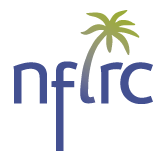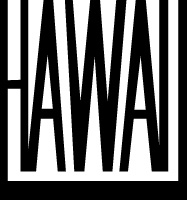vol. 1, no. 1
Articles
Endangered Sound Patterns: Three Perspectives on Theory and Description
Juliette Blevins
In this essay, I highlight the important role of endangered language documentation and description in the study of sound patterns. Three different perspectives are presented: a long view of phonology, from ancient to modern traditions; an areal and genetic view of sound patterns, and their relation to theory and description; and a practical perspective on the importance of research on endangered sound patterns. All perspectives converge on a common theme: the most lasting and influential contributions to the field are those with seamless boundaries between description and analysis.
Solar Power for the Digital Fieldworker
Tom Honeyman and Laura C. Robinson
This article discusses the technical aspects of a solar power setup for remote field situations. It guides the reader through estimating power consumption and setting up a basic solar kit. The authors address picking a solar panel, using a charge regulator, and choosing a battery based on estimated power consumption and availability. They discuss two different types of power adaptors, how to connect the equipment, and the benefits and drawbacks of using multi-meters. They address the use of rechargeable batteries and finally, caution against too heavy a reliance on solar power.
Copyright Essentials for Linguists
Paul Newman
This paper addresses copyright issues that linguists confront in their capacity as users and creators of scholarly work. It is organized in a simple question-answer format. Questions 1–3 present the basics of U.S. copyright law, including the fundamental nature of copyright as a bundle of intellectual property rights and the role of registration. Questions 4–5 treat issues of copyright notice. Questions 6–8 explain licenses, especially Creative Commons licenses, and the function of an Author’s Addendum. Questions 9–10 look at copyright in the context of online open access publishing. Question 11 discusses the concept of Fair Use. Question 12 analyzes the problem of what are called Orphan Works. Questions 13–19 explore issues of copyright ownership, including Work for Hire, joint authorship, and attribution. Questions 20–22 deal with copyright with specific reference to fieldwork situations and indigenous rights. The paper concludes with a brief presentation of key sources for further study and clarification.
Managing Fieldwork Data with Toolbox and the Natural Language Toolkit
Stuart Robinson, Greg Aumann, and Steven Bird
This paper shows how fieldwork data can be managed using the program Toolbox together with the Natural Language Toolkit (NLTK) for the Python programming language. It provides background information about Toolbox and describes how it can be downloaded and installed. The basic functionality of the program for lexicons and texts is described, and its strengths and weaknesses are reviewed. Its underlying data format is briefly discussed, and Toolbox processing capabilities of NLTK are introduced, showing ways in which it can be used to extend the functionality of Toolbox. This is illustrated with a few simple scripts that demonstrate basic data management tasks relevant to language documentation, such as printing out the contents of a lexicon as HTML.
Ethics and Revitalization of Dormant Languages: The Mutsun Language
Natasha Warner, Quirina Luna, and Lynnika Butler
Language revitalization (either increasing the use of an endangered language or bringing back a language with no speakers) brings up many ethical issues, beginning with whether it is even legitimate to attempt such revitalization. Language communities and linguists must address these issues if revitalization is to succeed in any of its goals. In this paper, we discuss the ethical issues we have encountered and the choices we have made about them during revitalization work with the Mutsun language (a dormant Costanoan language of California). We argue that language revitalization is a useful and legitimate application of linguistic knowledge.
Writer’s Workshops: A Strategy for Developing Indigenous Writers
Diana Dahlin Weber, Diane Wroge, and Joan Bomberger Yoder
This paper discusses how writers’ workshops can be used to develop writers from indigenous language groups. It considers how such workshops fit into the greater context of a community literacy program, and describes both the practical and instructional components of workshop design. Of particular importance is the principle of teaching writing as a process. Examples from Papua New Guinea demonstrate the role writers’ workshops play in developing indigenous orthographies and materials that contribute to culturally relevant educational curricula. Finally, the merits and weaknesses of such training are discussed, and questions for further research are raised.
Technology Reviews
Review of TshwaneLex Dictionary Compilation Software
Reviewed by Claire Bowern
Review of Fieldworks Language Explorer (FLEx)
Reviewed by Lynnika Butler and Heather van Volkinburg
Review of Computerized Language Analysis (CLAN)
Reviewed by Felicity Meakins
Book Review
Review of A Grammar of South Efate: An Oceanic Language of Vanuatu
Robert Early
Review of Kerresel a klechibelau: Tekoi er a Belau me a omesodel: Palauan language lexicon
Robert E. Gibson
vol. 1, no. 2
Articles
Natqgu Literacy: Capturing Three Domains for Written Language Use
Brenda H. Boerger
This article is a field report on the results of the Santa Cruz, Solomon Islands, Natqgu Language Project that encourages the Natqgu-speaking community to begin using the written vernacular in three domains where English and/or Solomon Islands Pijin were already well established: church, school, and home, and where written Natqgu had rarely been used. Ten factors contributed to recovering significant portions of these domains for written Natqgu over a twenty year period: a new orthography, literacy courses led by a national, sufficient vernacular literacy materials, vernacular literacy classes in two primary schools, a desire to learn song lyrics, later island-wide involvement of teachers and the distribution of literacy materials to their schools, the addressing of perceived language inferiority, promoters of written Natqgu in spheres of influence, computer technology, and friendly competition to gain reading fluency. A model incorporating analogous factors could contribute to language conservation efforts elsewhere in the world. The use of written Natqgu can be expected to continue on the island, since the domains that have been established for its use represent three major arenas of Santa Cruz society. It is also expected that increased use of written Natqgu will undergird spoken Natqgu and contribute to its long-term stability and vitality.
The Use of Perception Tests in Studying the Tonal System of Prinmi Dialects: A Speaker-centered Approach to Descriptive Linguistics
Picus Sizhi Ding
Contrary to previous description based on the Mandarin model of syllable-tone system, Xinyingpan, a dialect of Prinmi (a Tibeto-Burman language of China), has been discovered to possess a melody-tone system (or “pitch-accent” system) akin to that of Japanese. Targeting the crux of the unusual characteristics of this melody-tone system, where neutralization of two tonal categories in citation form is possible, this study uses perception tests to explore (dis)similarities among the tonal system of Xinyingpan Prinmi and those of other dialects. The perception tests consist of several minimal pairs of words contrasting solely by tone in a sentence frame. Results from more than twenty native speakers of fifteen Prinmi dialects from Ninglang, Lanping, and Yulong counties in Yunnan show that at least three minimal pairs of words in other dialects use the same tonal patterns for contrast in connected speech as in Xinyingpan. Evidence for the contrastive status of the pairs of words was attained directly from speakers who helped to prepare materials for the perception tests. This paper will also discuss some effects of language shift, such as linguistic attrition, observed in the empirical study.
For large language continua, such as Gbe of West Africa, a major challenge stakeholders concerned with language planning issues are facing is the question of the extensibility of written materials. To adequately inform language development program decisions in terms of literature extensibility, ideally, in-depth sociolinguistic studies would be conducted in all of the varieties involved, an undertaking that proves rather unfeasible for large continua.This paper proposes that when applying a multifaceted approach to linguistic data interpretation, such in-depth sociolinguistic studies may be unnecessary. This paper compares the findings of synchronic analyses of lexical and grammatical features elicited among 49 Gbe varieties to the outcomes of more recent Rapid Appraisal sociolinguistic surveys, and the findings of two diachronic studies. In considering the different approaches as complementing rather than contradicting each other, the proposed multifaceted approach exemplifies how different outcomes from various studies may be used to inform focused in-depth sociolinguistic research. Such research would in turn directly influence language program development decisions as to the extensibility of already existing literature to the remaining speech communities of the continuum.
Bislama into Kwamera: Code-mixing and Language Change on Tanna (Vanuatu)
Lamont Lindstrom
People throughout Vanuatu frequently mix Bislama (that country’s national Pidgin) into their vernaculars. Extensive code-mixing is an obvious indicator, and sometime cause, of language change or even language replacement. This paper discusses several sorts of Bislama code-mixing on Tanna among speakers of that island’s Kwamera language. It assesses levels and kinds of Bislama use in four village debates, tape-recorded in 1982 and 1983. Among other uses, Kwamera speakers mix Bislama when interjecting, reiterating, reporting speech, neutralizing marked vernacular terms, and qualifying what they say. The paper concludes with some remarks on the phonological, morphological/syntactic, and lexical/semantic consequences of recurrent language mixing—on how Islanders’ insertions of Bislama into their oratorical and everyday talk may or may not be effecting linguistic change in Kwamera. Bislama, so far at least, has enriched more than it has impoverished Tanna’s linguistic ecology. Speakers’ frequent Bislama mixes have not yet seriously undermined their vernacular.
Fostering the Growth of Budding Community Initiatives: The Role of Linguists in Tokelauan Maintenance in Hawai‘i
Yuko Otsuka and Andrew Wong
This paper discusses our involvement in the language revitalization project initiated by the Tokelauan community in Central O‘ahu, Hawai‘i. Nearly 1,000 people of Tokelauan descent live in Hawai‘i. Several elders have observed that a language shift from Tokelauan (Polynesian) to English and/or Hawai‘i Creole English is taking place in the community. Our involvement in the project illustrates several fundamental issues about language revitalization: (1) the need for collaboration not only between linguists and community members, but also among linguists with different areas of expertise, (2) the significance of balancing the needs of the community with those of researchers, (3) the importance of publicizing our research, and (4) the question of who is responsible for protecting the language right of immigrant populations.
Collaborative Linguistic Fieldwork: Practical Application of the Empowerment Model
Racquel-Maria Yamada
Academic linguists working to document and describe minoritized and endangered languages share with speech community members a devotion to the language of study. For the academic, language provides a window into cognition and the capacity of the human mind. For the speech community member, language represents cultural heritage and, for many, a tie to place and a sense of identity. Both parties have a vested interest in the documentation, description, and preservation of lesser-spoken languages as a way to perpetuate global linguistic and cultural diversity and maintain ties to heritage. Many who conduct linguistic fieldwork with endangered languages have noted that the needs and desires of the speech community are often subordinated in favor of those of the academic linguist. Some academics fear that time spent meeting community needs diminishes the field-worker’s academic productivity. This paper describes several collaborative, community-based projects that address the needs of both academics and the speech community, using case-study examples from the author’s own fieldwork with a Kari’nja community in Suriname. In discussing each project, emphasis is given to practical methods of meeting needs of both the academic and speech communities, and to how this ensures more balanced participation of each in the linguistic fieldwork endeavor.
Technology Reviews
Review of EUDICO Linguistic Annotator (ELAN)
Reviewed by Andrea L. Berez
Review of Audiamus 2.3
Reviewed by Amanda Brotchie
Review of LexiquePro
Reviewed by Valérie Guérin and Sébastien Lacrampe
Review of Fontographer
Reviewed by: Mia Kalish
Book Reviews
Review of A Hausa-English Dictionary
Reviewed by William R. Leben
Review of When Languages Die
Reviewed by Keren Rice




